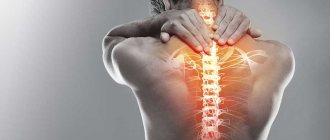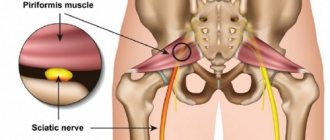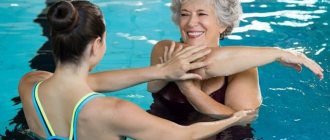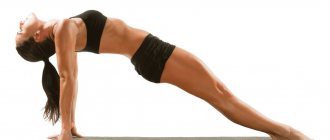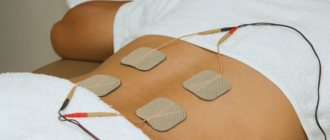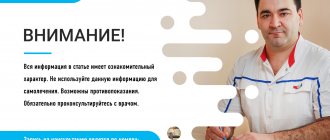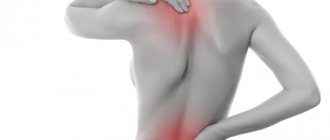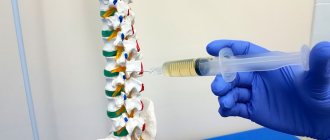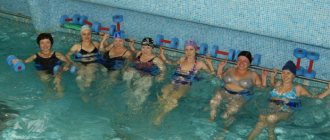The leading symptoms of osteochondrosis of any localization are pain and limitation of movement. Taking pharmacological drugs does not become a panacea due to their pronounced side effects and toxic effects on the human body. Vertebrologists, neurologists, and traumatologists recommend that patients do physical therapy and gymnastics daily to improve their well-being. The most effective training is done in a pool or any natural body of water.
Areas of focal damage.
Even ordinary swimming helps to redistribute the load on the spine, accelerate blood circulation, and remove tissue breakdown products from the intervertebral disc. But gymnastic exercises in water are especially effective in the treatment of cervical, thoracic, and lumbar osteochondrosis.
Why is swimming recommended for osteochondrosis?
Swimming brings significant relief for osteochondrosis of any part of the spine. As soon as a person is immersed in water, his body becomes practically weightless, the muscles relax as much as possible, and the pressure compressing the vertebrae disappears. Under such conditions, the distance between the vertebrae immediately becomes greater, and this allows the deformed discs to straighten out and begin to restore their natural shape.
When the intervertebral spaces expand, the pinched nerve endings are released and the pain subsides. The increase in these intervals is so significant that after a 45-minute swimming lesson, a person’s height increases by almost a whole centimeter. But after a person leaves the water, the intervertebral discs compress again, and growth becomes the same.
The vast majority of people suffering from osteochondrosis feel immediate relief when completely immersed in an aquatic environment.
But for a cure, or at least to curb the disease, simply visiting the pool is completely insufficient. To restore the health of your spine, you must follow the rules of behavior in the pool.
The benefits of swimming for the musculoskeletal system
The fact that water repeatedly reduces a person’s weight and has a beneficial effect on the spine is no secret to anyone. Studies have shown that when in water, a person’s weight is about 3 kg. This allows you to perform physical exercises without fear of overload and other adverse consequences.
If classes in the gym are aimed at developing the muscles of the inflamed area, then swimming includes absolutely all muscle groups.
Swimming for osteochondrosis helps:
- stimulation of the cardiac, respiratory and vascular systems;
- increasing joint mobility;
- strengthening the cervical and dorsal muscle corset;
- relaxation of the spine;
- increasing lung capacity;
- improvement of psycho-emotional state.
Muscles that work while swimming
The pool can be medicine
Is a swimming pool useful for osteochondrosis? Is it possible to go to the swimming pool if you have severe pain? In most cases, the answers to these questions are positive. Swimming lessons give excellent results if taught by an experienced instructor.
One of the main therapeutic factors of physical therapy in the pool is the possibility of long-term unloading of the spine when performing active movements. A specially selected set of exercises eliminates overstrain in certain areas of the muscles and restores correct symmetry. In addition, while performing exercises in the pool, patients can take a little rest from the pain that torments them.
Contraindications
Before visiting the pool, you need to consult a doctor, because only he can give permission to the patient to undergo these procedures.
Swimming is contraindicated if the patient has the following pathologies:
- heart failure;
- infectious diseases;
- epilepsy;
- respiratory failure;
- disruption of brain function;
- severe back pain;
- dermatitis;
- eczema;
- regular cramps.
If you want more relevant information from Dr. Shishonin, join the community Club of Former Hypertensive Patients
Basic rules of behavior in the pool
The question of “how long to swim” is decided on an individual basis, since the duration of the session greatly depends on the degree of development of the disease. If the water is warm (today there are many special swimming complexes with heated water), then such a pool during an exacerbation is not only possible, but even necessary. But you must follow the basic rules very carefully, otherwise you can cause significant harm to yourself and worsen the condition of your spine.
How to swim in the pool correctly:
- maximum relaxation of the muscles of the back and neck and restoration of symmetry can be achieved by swimming on the back or breaststroke;
- When going swimming, you must take a life jacket with you. You will need it for relaxing on the water - it is in this position that you can completely relax your entire back. Even when you fully master the technique of lying on the water, the vest will still be useful;
- be sure to follow breathing techniques – it helps to significantly increase the effectiveness of your exercises;
- The phase of active movements should last 5-10 minutes, followed by rest on the water.
And the most important rule: even with a mild degree of intervertebral osteochondrosis, you can only exercise in the pool under the guidance of an experienced instructor.
Water gymnastics
A good addition to swimming would be to do exercises in the water. Here is an example complex:
- Having sunk into chest-deep water, first walk in place, then move.
- Raise your right and left knees alternately (pull them towards your chest), while simultaneously spreading your arms to the sides.
- Holding the side with your hands, perform movements with your legs, as in breaststroke, lying on the water with your chest.
- While standing in the water, place your hands on your waist and bend forward, moving your elbows back.
- While standing in the water, stick your stomach forward.
- Perform squats in the water while holding the side of the water with your hands.
Between each group of exercises, do not forget to rest and raise your arms to the sides several times.
Five important rules for water training
Choose the right place for water activities
When hypothermia occurs, the symptoms of osteochondrosis can worsen, so it is better to avoid swimming in open reservoirs (specifically for medicinal purposes), because in addition to cold water, there are currents in reservoirs that will significantly increase the load during movements. Outdoor pools are also not a good option.
But indoor swimming pools with constant water heating are what you need. The water temperature should ideally be 27–30 degrees. If you are planning to visit a health center that also has saunas, this is generally great, there you can warm up your muscles and relax. If possible, visit a pool staffed by experienced exercise therapy instructors - they will be able to monitor the correct breathing and exercise performance.
Exercise regularly and for a fixed time
Expect to devote only about 60 minutes to training, of which 45–50 minutes are swimming or gymnastics, and the remaining time is warm-up. After training, it is recommended to rest lying on a hard couch for 30–40 minutes. To achieve positive results, it is enough to exercise 2-3 times a week.
Do a warm-up
Before water training, it is important to prepare properly. Warm up first in the air (standard simple exercises), and then also in the water, making swings and active movements of your limbs, holding on to the sides of the pool.
Helpful advice: never freeze in the water. As soon as a feeling of cold appears, warm up, work more actively with your arms and legs, and you can run into a warm shower.
Breathe correctly
This rule cannot be neglected. Remember: during swims you need to breathe according to the principle of “deep inhalation - sharp exhalation.”
Do not use an air vest
For those who cannot swim or feel unsure in the water, it is recommended to use an inflatable ring or pillow as an aid.
Useful video - 4 most effective and useful ways of swimming to improve your back health:
Safety first
It should be especially emphasized that the pool only helps those who follow safety rules. The fact is that, once in the water, a person suffering from osteochondrosis feels an instant decrease in pain, and he has a false sense of permissiveness. But any sudden or sweeping movement can further aggravate worn discs and pinched nerves. And this is fraught with a new exacerbation of the disease and a strong deterioration in the condition.
Security requirements can be formulated as follows:
- You need to perform the exercises very carefully, and in no case should you chase records;
- You can start exercising no earlier than 30 minutes after eating;
- you need to exercise either in a heated therapeutic pool, or in a pool where there is a specially designated and fenced area (this is necessary to prevent collisions with other swimmers);
- classes must be conducted by an instructor with special education; working out with an ordinary sports coach, or on your own, means dooming yourself to great risk;
- before entering the water (even if it is warm), you must complete a set of warm-up exercises;
- stay in the water should not exceed 45 minutes (longer swimming creates the danger of hypothermia and has a bad effect on the condition of the skin);
- After finishing classes, you need to take a contrast shower, perform relaxation exercises and drink hot or warm tea.
Important note. Even slight hypothermia obtained in water causes severe harm in osteochondrosis. If during exercise you feel that you are starting to feel cold, you must immediately get out of the water and warm up well.
Let's remember anatomy
The spine consists of vertebrae that are flexibly connected to each other, with intervertebral discs between them. Oddly enough, the cause of all the problems is upright walking. Over millions of years of human evolution, Mother Nature has never been able to figure out how to save people from back diseases. Animals do not face such difficulties. What about the giraffe? No one knows whether his neck hurts, but it is true that zoologists find no evidence of changes in the spine. Why? Yes, because he walks on four legs, his neck supports his small head, and the entire load is evenly distributed on his limbs.
Our spine is forced to bear the entire weight of the body. Being under constant tension, the cartilage tissue of the disc gradually deforms, it acquires a flatter shape. Displacement of the vertebra and compression of the nerve ending cause severe muscle spasm, which does not give rest and causes stiffness of movement. There is no cure for osteochondrosis; you can only reduce symptoms and prolong periods of remission. Depending on the location, osteochondrosis of the cervical, thoracic or lumbar region is distinguished.
What swimming styles are best?
breaststroke swimming
For diseases of the spine, it is first recommended to master lying on the water, swimming on the back without arms, and swimming with breaststroke. With this style, the movement of the arms and legs is symmetrical relative to the spine, so there is no threat of displacement of the diseased disc. The limbs of a person swimming breaststroke are not exposed to the air (unlike crawl or butterfly), which is also ideal for restoring the health of the spine.
The technique of real sports breaststroke is quite complex, and in order to fully master it, hard training is needed. But to improve your health, instructors offer simplified techniques that do not require much endurance and at the same time develop the muscles of the back, arms and legs.
Useful exercises
When entering the water, before swimming for the treatment of osteochondrosis, the patient must perform tasks left and right on the spot and bend over.
Proper swimming for cervical osteochondrosis excludes breaststroke; only swimming with the stomach up is allowed to relieve the load on the neck.
If you have problems in your back and chest, it is recommended to perform tasks on a pole or crossbar.
| Department | Exercises | ||||
| Cervical | Float holding a pillow in your hands | Squats in water | Breathing exercises | Relaxation in the supine position, turning the head | — |
| Lumbar | Swim with a pillow between your legs | Breath-hold breaststroke | Belly protrusion in water | Squats in water | Bend forward in the water |
| Chest | Float holding a pillow in your hands | Breaststroke | Bend forward in the water | — | — |
The universal rule for getting rid of osteochondrosis of all parts is breathing and maintaining rhythm. Only then can you relax, restore blood circulation and use all muscle groups.
If the swimming exercise does not work out, then it needs to be repeated with a coach or simplified . Heavy loads during the first sessions can only aggravate the problem, especially in elderly patients.
Disease prognosis
In advanced cases, cervical osteochondrosis can lead to persistent limitation of physical activity and serious neurological disorders. However, with comprehensive treatment and a properly selected rehabilitation program, the disease has a favorable prognosis.
Osteochondrosis of the cervical spine is best corrected at the initial stage of formation. In advanced cases of the disease, compression of the spinal nerve roots and spinal cord may occur. Symptoms of this severe complication include loss of mobility and sensitivity in the hands, and in the most serious cases, paralysis of the entire body (tetraparesis). To prevent such consequences, it is often necessary to resort to neurosurgical surgery. Therefore, you should seek medical help as early as possible. Even slight pain in the neck of a periodic nature is a reason to make an appointment with a doctor.
You can find out the cost of rehabilitation programs or make an appointment by calling: +7 (812) 425-67-96
Treatment of osteochondrosis in the sanatorium LOC "Sakharez"
The methods used in the sanatorium lead to stopping degenerative processes, restoring the functions and normal structure of cartilage and bone tissue. The therapy relieves the patient of pain. Patients with osteochondrosis are shown:
- Balneotherapy – therapeutic baths improve blood flow to the vessels of the spine and surrounding soft tissues.
- Manual therapy and massage are aimed at developing muscles and ligaments. They have an analgesic effect. Improves blood supply to tissues and cartilage regeneration.
- Traction is aimed at the affected part of the spine and helps restore the shock-absorbing properties of the nucleus pulposus. Protrusions and small herniated intervertebral discs are corrected.
- Exercise therapy strengthens the muscle corset, accelerates blood circulation throughout the body and in the tissues of the spine, in particular.
- Reflexotherapy stimulates segmental nerves and normalizes muscle tone.
If you undergo complex treatment at the Sakharez health resort, you can not only slow down the development of the pathological process, but also cause the reverse development of some degenerative phenomena.
